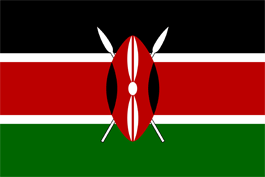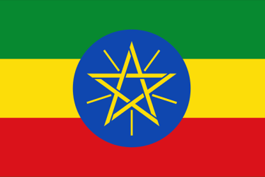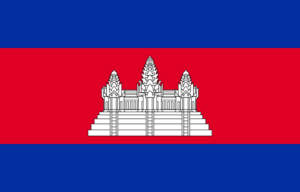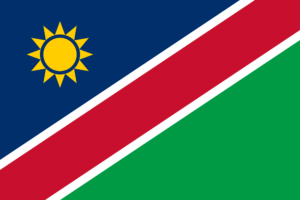Africa & Sub-Sahara
Cervical cancer is the most common cancer killer among women in sub-Saharan Africa, India and other parts of the developing world. Every 10 minutes a woman in Africa dies of cervical cancer. Most affected women live in unreliable health infrastructures and are not only more likely to die but also more likely to suffer pain and financial distress. This tragedy weighs heavily not only on the affected family but on the society at large as women in Africa are the cornerstone of economic development.
Kenya, an equatorial country in East Africa with a size similar to Spain has a population of 44.3 Million people of whom over 12 millions are women ages 15 years and older. 75% of the population live in rural areas.
Kenya is considered one of the most stable countries in the East African/horn of Africa region.. Although industrially the most developed country ( largest most diversified economy) in East Africa, 45% of the population live below the extreme poverty line (less than 1.25USD/d).
The life expectancy at birth (61yrs) has increased by 9 year(s) over the period of 2000-2012.
The burden of communicable disease is high. The adult HIV prevalence is estimated to be 6.1%. HIV is responsible for 29% of all deaths. Other high burden infectious diseases include Tuberculosis, responsible for 14% of deaths, and malaria, the main killer among the under 5 population, but also responsible for 30% of out-patient morbidity.
Non-communicable diseases are on the rise, with cardiovascular diseases and cancer being the 2nd and 3rd leading causes of death. Current estimates rank cervical cancer as the most common cancer in women. About 5000 women are diagnosed with cervical cancer every year, of which most will die from the disease within a year.
About 38.8% of the general population is estimated to harbor HPV infection at a given time (WHO/ICO Information Centre on HPV and Cervical Cancer (HPV Information Centre) 2010).
The Kenyan Ministry of Health recognizes the inaccessibility of cytology based screening (Pap test) which remains opportunistic and only in private facilities. To address the need for screening, the ministry of health prioritizes the use of the cheap and simple visual inspection (VIA) at level three facilities (health centers) which are manned by nurses and linked to level 4 facilities (district hospitals) as the referral hospitals which are expected to have capacity for cryosurgery. However, no national screening program has been developed and realized yet to exceed screening coverage beyond regional activities and services in HIV clinics. Primary prevention in form HPV vaccines for adolescent girls is a major aim in the fight against cervical cancer. Both HPV vaccines are licensed in Kenya, but by far not accessible for the vast majority of girls. A vaccine campaign by the GAVI Alliance, a public-private partnership for the implementation and financing of vaccines in developing counties, is however intending covering Kenya the next years. According to WHO cervical cancer screening coverage is 3.2% of women 18 to 69.
Ethiopia, a landlocked country in the horn of Africa with a size similar to the Republic of South Africa or twice the size of Spain, has a total population of estimated 94 Million which is the second largest population in Africa, over 25 mill are women are over 15 years of age. More than 80% of the population live in rural areas.
Since the new constitution in 1994, Ethiopia has a federal system of government that divides the country into 9 semi-autonomous regional states. Although one of the fastest growing economies in Africa and the world Ethiopia ranks among the poorest countries in the world with an estimated 38 percent of the population living below the extreme poverty line (Less than 1.25 USD/d).
The life expectancy at birth (64 years) has increased by 13 year(s) over the period of 2000-2012.
About 80% of diseases are attributable to preventable conditions related to infectious diseases, malnutrition and environmental hygiene. The adult HIV prevalence is 1.5% in 2011, which makes Ethiopia one of the countries with the most HIV infected people (about 800 000) in the world, third after Republic of South Africa and India. More than 500,000 women are estimated to be infected with HIV and at risk of developing cervical cancer.
Cardiovascular disease and cancer are the leading chronic diseases, with significant contribution to the overall mortality rate. Cervical cancer ranks second after breast cancer among women in Ethiopia. Over 7,000 new cervical cancer cases are diagnosed annually.
The Ethiopian government has declared cervical cancer prevention a major public health issue and plan to roll out a nationwide screening program based on Visual Inspection with Acetic Acid (VIA).
Cambodia, a country in Southeast Asia, is renowned for its breathtaking landscapes, rich history, and cultural diversity. Covering an area of about 181,035 square kilometers, it shares borders with Thailand, Laos, Vietnam, and the Gulf of Thailand. Phnom Penh, the vibrant capital, is situated at the confluence of the Mekong and Tonle Sap rivers and serves as the political, economic, and cultural hub of the country.
The history of Cambodia is both fascinating and tragic. The glorious days of the Khmer Empire, which existed between the 9th and 15th centuries, left behind unparalleled architectural masterpieces, including Angkor Wat, the world’s largest religious monument. This temple complex is a symbol of national pride and a major attraction for tourists from around the globe.
Namibia, located in Southern Africa, is a country known for its striking natural landscapes, diverse wildlife, and rich cultural heritage. It covers an area of about 825,615 square kilometers, making it the 34th largest country in the world. Namibia shares borders with Angola and Zambia to the north, Botswana to the east, South Africa to the south, and the Atlantic Ocean to the west. Its capital and largest city, Windhoek, sits roughly in the center of the country, serving as the economic and governmental heart.





